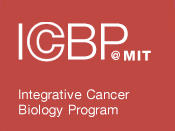| Title | The receptor AXL diversifies EGFR signaling and limits the response to EGFR-targeted inhibitors in triple-negative breast cancer cells. |
| Publication Type | Journal Article |
| Year of Publication | 2013 |
| Authors | Meyer, AS, Miller, MA, Gertler, FB, Lauffenburger, DA |
| Journal | Sci Signal |
| Volume | 6 |
| Issue | 287 |
| Pagination | ra66 |
| Date Published | 2013 Aug 6 |
| ISSN | 1937-9145 |
| Keywords | Antigens, CD, Breast Neoplasms, Cell Line, Tumor, Cell Movement, Female, Gene Expression Regulation, Neoplastic, Humans, Proto-Oncogene Proteins, Proto-Oncogene Proteins c-met, Receptor Protein-Tyrosine Kinases, Receptor, Epidermal Growth Factor, Receptor, IGF Type 1, Receptor, Insulin, Receptors, Platelet-Derived Growth Factor, Signal Transduction, Transcriptional Activation |
| Abstract | The relationship between drug resistance, changes in signaling, and emergence of an invasive phenotype is well appreciated, but the underlying mechanisms are not well understood. Using machine learning analysis applied to the Cancer Cell Line Encyclopedia database, we identified expression of AXL, the gene that encodes the epithelial-to-mesenchymal transition (EMT)-associated receptor tyrosine kinase (RTK) AXL, as exceptionally predictive of lack of response to ErbB family receptor-targeted inhibitors. Activation of EGFR (epidermal growth factor receptor) transactivated AXL, and this ligand-independent AXL activity diversified EGFR-induced signaling into additional downstream pathways beyond those triggered by EGFR alone. AXL-mediated signaling diversification was required for EGF (epidermal growth factor)-elicited motility responses in AXL-positive TNBC (triple-negative breast cancer) cells. Using cross-linking coimmunoprecipitation assays, we determined that AXL associated with EGFR, other ErbB receptor family members, MET (hepatocyte growth factor receptor), and PDGFR (platelet-derived growth factor receptor) but not IGF1R (insulin-like growth factor 1 receptor) or INSR (insulin receptor). From these AXL interaction data, we predicted AXL-mediated signaling synergy for additional RTKs and validated these predictions in cells. This alternative mechanism of receptor activation limits the use of ligand-blocking therapies and indicates against therapy withdrawal after acquired resistance. Further, subadditive interaction between EGFR- and AXL-targeted inhibitors across all AXL-positive TNBC cell lines may indicate that increased abundance of EGFR is principally a means to transactivation-mediated signaling. |
| DOI | 10.1126/scisignal.2004155 |
| Alternate Journal | Sci Signal |
| PubMed ID | 23921085 |
| PubMed Central ID | PMC3947921 |
| Grant List | P30 CA014051 / CA / NCI NIH HHS / United States R01 CA096504 / CA / NCI NIH HHS / United States U54 CA112967 / CA / NCI NIH HHS / United States |
